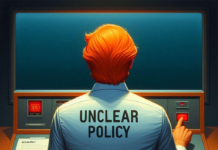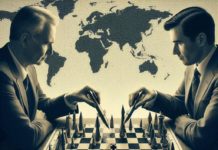MARKET PERSPECTIVE
By J Mulraj
July 8-14, 2023
The idiocy of a myopic outlook
In an article written in 2000 in the Wired, titled ‘Why The Future Doesn’t Need Us’, Bill Joy, a co founder of Sun Microsystems, expressed worry about the three new technologies then emerging. These were genomics, nanotechnology and robotics (GNR). Joy concluded that these technologies had the potential to make humans an endangered species. For, unlike previous technologies of nuclear, biological and chemical (NBC), which required huge investment and resources, hence could be owned and operated only by the State, the GNR technologies could be developed by individuals in a garage. Bereft of the oversight of the State owning them, as are NBC, the new ones are far more dangerous to control. Joy stated that the GNR technologies are self learning, hence could, over time, make humans redundant or subservient. These fears are now also being expressed by leading technologists, including Sam Altman, the founder of Open AI, which developed Chat GPT.
Perhaps this framework can help explain the insanity of policies of today’s policymakers. For, if humanity is headed for extinction, why should policymakers not play the fiddle as Nero did? Which is what they appear to be doing, in ratcheting up geopolitical tensions. The illustration above shows a meeting of policymakers, in progress!
It could be a meeting of central bankers who, for years, have nonchalantly buried their heads in the sand, oblivious to the folly of unbridled quantitative easing (QE). The easy money created asset bubbles, now bursting, and a misdirection of money, available cheaply. For example, China has 3.5 billion square feet of built but unoccupied apartments, equivalent to 4 m. homes! This is a wasteful exploitation of Mother Earth in excavating the iron ore and limestone to build them.
QE laid the foundation for the subsequent inflation which the same central bankers, having derisively described it as transitory, discovered it wasn’t, after raising their heads out of the sand. They then raised interest rates sharply, (5% by the US Fed) which lays the foundation for the next crises. These will be in banking (some have already failed, many others will), but, more worryingly, in pension funds.
It could be a meeting of pension fund managers. Pension funds, globally, are bankrupt. They don’t have the funds to meet pension obligations, which are defined. Hear this video by famed billionaire investor, Stanley Druckenmiller. Watch at 6:38 where he says that, in order to pay for all entitlements promised by the US Government, it has two alternative options. It either raises all taxes by 40%, forever, or cuts all spending by 36%, forever. Yet the pension fund managers, and the US Treasury Department, choose to ignore warnings, bury their heads in the sand, and raise debt. In the above video, Druckenmiller says that the actual US debt is not $31 trillion, as declared, but is closer to $200 trillion, representing the net present value of its future obligations under various entitlement schemes, including pensions, Medicare and Medicaid.
Or it could be a meeting of leaders at the Pentagon, discussing what to do next in the futile war in Ukraine. A war that the collective West, spurning repeated requests by Russia to discuss their concerns over NATO expansion to its doorstep, compelled Russia to embark upon. With nobody willing to discuss, what options did it have? The consequences of this head-in-the-sand myopia by the West has been to:
> drive Europe, deprived of cheap Russian energy, bankrupt
> drive Russia into the arms of China, both being adversaries of USA. (So Biden and his advisors have alienated their friends, Europe, and strengthened their enemies, China and Russia).
> deplete stocks of weapons in the collective west, to supply them to Ukraine at great cost to their own exchequers and to the environment. The collective West has to borrow more to create assets (weapons) which are meant for destruction, hence not value accretive. In short, they are borrowing in order to reduce GDP. And now, after agreeing to provide cluster bombs to Ukraine, the US is adding war crimes to its litany of follies.
Had Franz Kafka made a novel with this plot, no publisher would have printed it.
Or it could be a meeting of the US Treasury and Fed, burying their heads to the dangers of looming de-dollarization. The US has hegemony over the global financial system. Its currency is universally accepted and accounts for 80% of all global transactions, and 60% of all foreign exchange reserves. It also has control over the international payment network, SWIFT, using which it is able to impose sanctions on countries which do things it dislikes. It is the often used club of sanctions that has led countries to revolt, and seek alternatives to the $, aka de-dollarization. An announcement for a BRICS (now comprising 41 nations) backed by gold, will be made at the next BRICS meeting, in South Africa in August. This would jolt, but not displace, the US $. That, in turn, would weaken efforts to raise US $ debt in future.
So it is evident that a lot of poor policy decisions have led to USA being in a precarious position. It is its ability to innovate, and the ecosystem established to fund new innovation, which is allowing it to have high employment and enough consumption to prevent it from sliding into recession. That’s thanks to its citizens, not to policy.
Coming to India, it’s GDP is a little less than 18% of China’s. India lost the race because, through the ‘80s, when China, under economic reforms led by Deng Xioping, was growing at a fast pace, allowing free markets to propel growth, India saw 4 Prime Ministers. Charan Singh (7 months), Indira Gandhi (4 years, 10 m), Rajiv Gandhi (5 years, 2 months) and VP Singh (11 months). While China, under a single, market oriented, leader, was growing fast, India’s polity was squabbling over petty politics, retaining a stifling licensing system, having high tax rates, encouraging evasion, and losing the economic race.
The examples of both countries shows the folly of petty and myopic thinking in policy making, and the economic growth achievable by placing trust in free markets.
Sadly, in India we see only lip service to free markets and a return to bureaucratic suspicion and intervention. The high, and increasing, revenues from GST (Goods and Services Tax) point to the need to reduce rates and rationalize them, something that will allow India to bridge the gap with China faster.
Last week the Sensex closed at 66149, up 459, after hitting a new all time high of 66159.
During the week NATO leaders held a meeting in Vilnius, Lithuania. Ukrainian President Zelensky was hoping his country would be admitted into NATO, but NATO, not wanting to be dragged into the conflict for fear it would escalate to WW III, said it would admit it later, after the war. Ukraine has been badly weakened by the war; about 10-11 m. of its population (38 m. before the war) have emigrated and an estimated 300,000 killed/injured. A major Russian attack may, perhaps, lead to a negotiated settlement of a war that should never have taken place.
The above illustration could be of the NATO meeting in Vilnius where France and UK agreed to supply long range missiles for Ukraine. If Ukraine uses these to attack Moscow, the retaliatory measures can escalate into WW III. I take no Joy in saying that. Are leaders so imbecilic as to risk that? I guess they are.
Election results would be important factor in determining market movements in 2024. Taiwan is to hold presidential elections in January. One of the political parties is in favor of a closer alliance with China. Should it win, perhaps China would not pursue a military takeover of Taiwan.
Russia holds Presidential elections on March 17. Putin retains his popularity, so should win. India goes to the polls, tentatively in April/May, with the ruling party expected to win, with an opposition in disarray. Several European elections, including for the EU Parliament, will be held. Finally, US Presidential elections will be held on Nov 5; the current popularity rating of Trump is far higher than Biden.
But before that, this month, the US Fed is likely to raise interest rates again, probably by 0.25%. It has raised them by 5% so far, which has resulted in:-
> a fall in market prices of T Bills, bankrupting 3 banks so far, with others, mainly community banks, likely
> a fall in the ‘home equity’ of home owners. The home equity increases when home prices rise, allowing owners to borrow against it, and spend. With home prices falling, home equity does, too, decreasing the possibility, and the likelihood, of greater consumer spending.
> Pension funds are badly underfunded. This is a Damocles sword waiting to drop.
> Corporate profits, and margins, falling. They are expected to, in the next quarter.
All in all, there are several bearish factors around which could enervate even the hardiest of bulls.
It is time policy makers stop emulating the ostrich and start emulating the owl.
Picture Source: https://www.dreamstime.com/stock-photo-fear-crisis-businessman-like-ostrich-concept-image41131254
Comments may be sent to jmulraj@asiaconverge.com










































COMMENTS